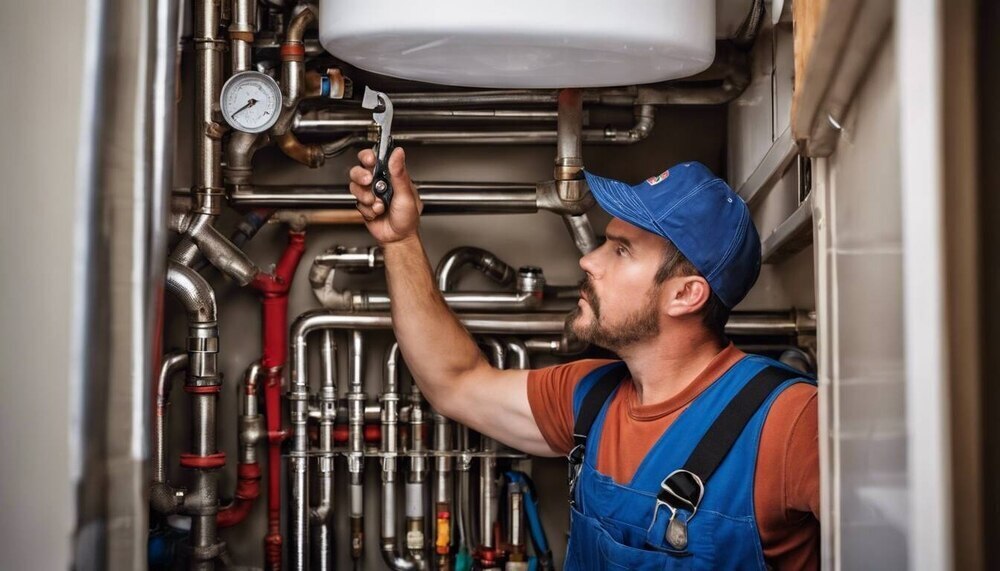
Plumbing is an essential part of every home, but with so many myths circulating about how to care for your pipes, drains, and fixtures, it can be tough to separate fact from fiction. As a homeowner, it’s important to make informed decisions about your plumbing to avoid unnecessary repairs and costly mistakes. In this homeowner’s guide, we’ll address some of the most common plumbing myths and provide the facts to help you keep your plumbing system in top condition.
Flushing Anything Down the Toilet Is Fine
One of the most dangerous myths is that anything can be flushed down the toilet. Many homeowners believe that if something is small enough to fit, it can be flushed without issue. However, flushing items such as paper towels, cotton balls, wipes, or feminine hygiene products can lead to clogged pipes and expensive repairs. These items do not break down like toilet paper, and they can cause blockages that are difficult to clear.
A Leaky Faucet Isn’t a Big Deal
It’s easy to ignore a leaky faucet, especially if the drip is small. Many people believe that it’s not a major problem and that it can wait to be fixed. However, even a minor leak can waste a significant amount of water over time and lead to increased water bills. Not only that, but persistent leaks can cause long-term damage to your fixtures and plumbing system.
Drano is a Safe Way to Clear Clogs
When a drain is clogged, many homeowners reach for a bottle of Drano or other chemical drain cleaners as a quick fix. While these products may provide temporary relief, they can do more harm than good in the long run. Chemical drain cleaners are harsh and can damage your pipes, especially if used frequently. They can also be harmful to the environment and pose a safety risk to you and your family.

Hard Water Isn’t a Problem
Many homeowners are unaware of the impact of hard water on their plumbing systems. Hard water contains high levels of minerals like calcium and magnesium, which can build up over time and create scale deposits in your pipes, water heater, and appliances. While hard water might seem harmless, it can cause significant problems such as reduced water flow, appliance damage, and increased energy consumption.
All Plumbing Problems Are Simple DIY Fixes
With the rise of DIY tutorials and online advice, many homeowners are tempted to tackle plumbing issues on their own. While some minor repairs, like changing a showerhead or tightening a loose pipe, are within the average person’s skill set, more complex plumbing problems require professional expertise. Trying to fix serious issues like burst pipes, gas leaks, or sewer line backups without the proper knowledge can result in further damage and pose safety risks.
You Can Save Money by Neglecting Routine Maintenance
Many homeowners believe that they can save money by not investing in regular plumbing maintenance. However, neglecting routine checks and maintenance can lead to more frequent and costly repairs in the future. Preventative maintenance helps identify and address small issues before they turn into major problems.
Water Heater Temperature Settings Don’t Matter
Some homeowners set their water heater temperature to the highest setting, assuming that it will provide the best hot water. However, water that’s too hot can be dangerous and lead to scalding injuries, especially for young children or elderly family members. Additionally, setting the temperature too high can cause your water heater to work harder, leading to increased energy costs and a shorter lifespan for the unit.
Conclusion
By understanding the facts behind these common plumbing myths, homeowners can make smarter decisions about their plumbing systems. Whether you’re tackling minor repairs or planning a major renovation, knowing what’s true and what’s not can help you avoid costly mistakes and keep your plumbing in great shape. Always remember that if you’re unsure about any plumbing issue, it’s best to consult a professional plumber. Taking proactive steps today can save you time, money, and stress down the road.
